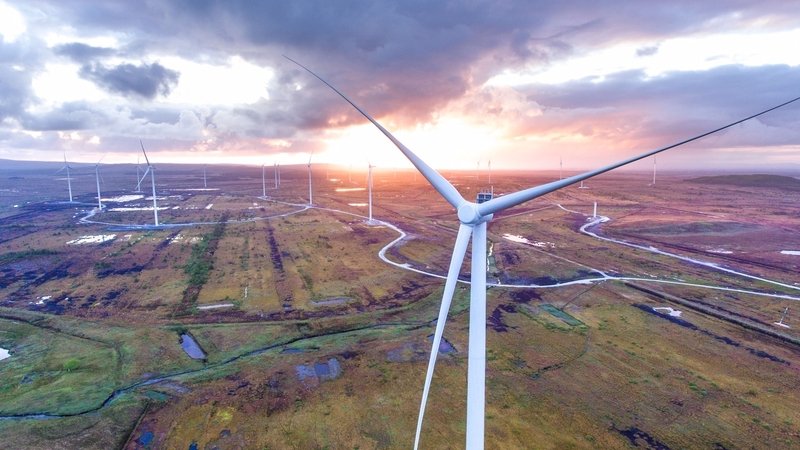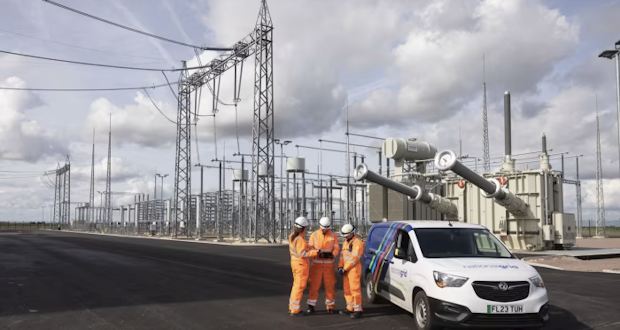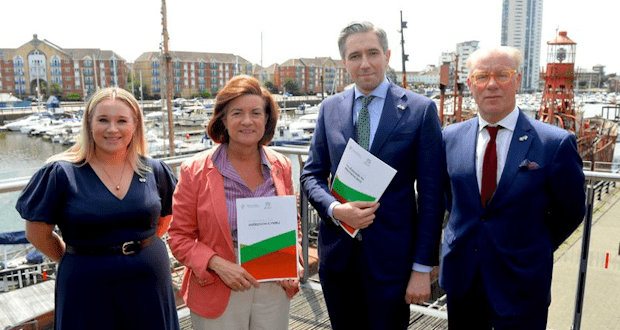With the conclusion of Cop26 in Glasgow, focus switches to how countries can quickly start delivering on commitments to reduce emissions over the coming decade.
A report published earlier this year by a team of energy researchers at University College Cork highlights how Ireland’s ongoing energy transformation – which is necessary to meet our decarbonisation requirements for 2050 – will predominantly involve a massive increase in the development of wind power.
The report, Our Climate Neutral Future – Zero by 50, highlights wind energy as Ireland’s most abundant and easily tapped resource, with wind power supply accounting for up to five times that of solar by 2050.
But the transition won’t be easy, facing issues such as the intermittent nature of wind and solar power, which are weather dependent, and therefore requiring the need for other energy sources, as well as a large storage capacity, increasingly in the form of battery technology.
The publication was led by Dr Paul Deane at the MaREI SFI Research Centre for Energy, Climate and the Marine, at UCC.
How big a part can wind power play in meeting our decarbonisation goals over the coming decades?
Today we have about four or five gigawatts of wind power installed in Ireland, and under our projections, looking at population growth, and economic activity – looking at our energy demands in the future – we recognise that this is going to have to grow up to about 20 gigawatts, meaning a fourfold increase by 2050.
This will involve a lot of onshore wind power, because it is the cheapest form of renewable energy that we have available to us here in Ireland. There are different estimates which one can make, but generally speaking we think that somewhere between 6GW and 10GW of onshore wind is available on the island. Thereafter the rest will be made up from offshore wind resources, which are a bit more expensive, relatively speaking. Offshore also makes a lot of sense in many regions, along the east coast for example, where it is close to the big demand centres, like Dublin.
Do we think that offshore will ever becoming cheaper than onshore?
No, I don’t think so. Onshore is currently cheaper per gigawatt and is the cheapest form of renewable energy that we have. No doubt there will be large decreases in the costs of offshore construction and maintenance over time, but onshore is also likely to get cheaper.
Onshore construction costs are relatively manageable, and you’re not dealing with the harsh environments out at sea, where you also need a lot of cranes and barges. I’m not saying there is no place for offshore wind energy – we need it and it is a huge part of our future – but it just isn’t as cheap as onshore.
How does wind fit in with other energy sources in our decarbonised future?
We can’t be sure of the numbers because these are just projections – albeit based on our best future scenario modelling – but it looks like we should be aiming to have around four or five times more wind than solar in the long run.
That’s around 4GW or 5GW of solar in the mix, with the 20GW of wind I mentioned earlier. That is a huge amount of solar, especially compared with what we have in place today. Solar panels are now very cheap – costs have tumbled – and they also work well with batteries, which are rapidly becoming cheaper.
The challenge with solar, unfortunately, is that we just don’t get enough sunlight in the winter months. When we’re thinking about the future of these power systems, we often think about averages. But actually, power systems must be resilient to extremes, especially when we’re designing our systems of the future, or we are thinking about worst-case scenarios. When modelling these futures we include scenarios where, for example, we have five days with little wind or sun. In order to do that we have to look at things like long-term storage, from future battery technology, for example. It’s these kind of extreme scenarios which matter, even if they are rare, and ultimately provide the framework for designing our energy power system future.
How likely is all this to happen in time to meet our national and EU decarbonisation targets by 2030 and beyond?
The frustrating thing that we’re seeing at that moment, is that despite all the huge technological improvements, development, and innovation across the wind industry, the planning permission process here is rather fragmented and incoherent.
There are all sorts of permits and licences required for the planning and construction of both onshore and offshore wind farms. It’s a real roadblock, which is just not being removed in time to reap the benefits of the rapidly improving technology.
It’s a problem for two main reasons. Firstly, it creates extra risk for the developers. These projects are already very capital intensive – they are expensive – and increasing the risk of delay increases costs. Secondly, there can also be a negative impact to our national reputation. All over Europe, developers are looking to build large offshore wind farms, and in the UK and Denmark, for example, they can currently offer a much more attractive legislative process, with lower risk.
What can the Government do to make this all happen faster?
There has been a growing awareness around this problem for the past five or six years or so, and it’s been a credit to government that they’re at least trying to deal with it. They are now trying to create a unified planning procedure for offshore wind, and developing a new planning entity to govern offshore wind applications, to help deal with the process, to make it smoother.
The main idea here is that instead of going to many different departments to get planning for offshore wind farms, we’ll just go to one. So it’s an effort to at least recognise the challenges of the fragmented nature of planning here, and it’s trying to address the issue by putting a more streamlined process in place.
We need this to happen so that we can rapidly speed up the planning process and get access to our national wind power abundance sooner rather than later, when it will be too late to meet our decarbonisation requirements.
Original article – https://www.irishtimes.com/news/science/wind-energy-why-is-ireland-not-fulfilling-its-potential-1.4729335



